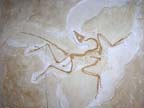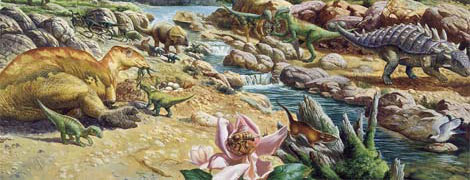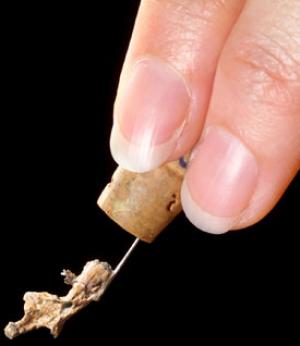 |
 |
 |
 |
 |
Produced
by the Population Genetics and Evolution class, Furman University |
||||
 |
 |
 |
 |
 |
Produced
by the Population Genetics and Evolution class, Furman University |
||||
 |
The
Cretaceous: Quetzalcoatlus |
 |
||
| Teinolophos,
Greek for “extended ridge tooth”, are a pre-historic mammalian
genus found in Victoria, Australia (Strauss 2010). Thought to be a monotreme,
an egg-laying mammal, Teinolophos could be an ancestor to the
modern-day platypus (Rowe et al. 2008). Teinolophos trusleri
was found in Flat Rock, Victoria, Australia in the form of a lower jaw
bone, which scientists have been debating over since early 2005 (Wikipedia
2010). It is thought that Teinolophos suggests that the two monotreme clades that are known today, platypus and echidnas, were already distrinct in the Cretaceous period and that monotremes have a much deeper history than thought ten years ago (Rowe et al. 2008). Teinolophos were about 6 inches long and weighed about 10 ounces (Strauss 2010). Not much is known about pre-historic monotremes, as they left a poor fossil record. But with more investigation into the Flat Rock site, it is possible that more fossils will be found of early mammals (Rowe et al. 2008). Page by Julia Bobo |

|
| Lower jaw bone of Teinolophos trusleri, found in Flat Rock, Victoria, Austrlia. Taken from Sciecne Daily | |
|
Strauss B. 2010. Teinolophos- Early Mammal. Accessed on April 5th, 2010. Rowe T, Rich TH, Vickers-Rich P, Springer M, and Woodburne MO. 2008. The oldest platypus and its bearing on divergence timing of the platypus and echidna clades. PNAS 105: 1238–1242. Accessed on April 5th, 2010. Wikipedia. 2010. Teinolophos. Accessed on April 5th, 2010. |